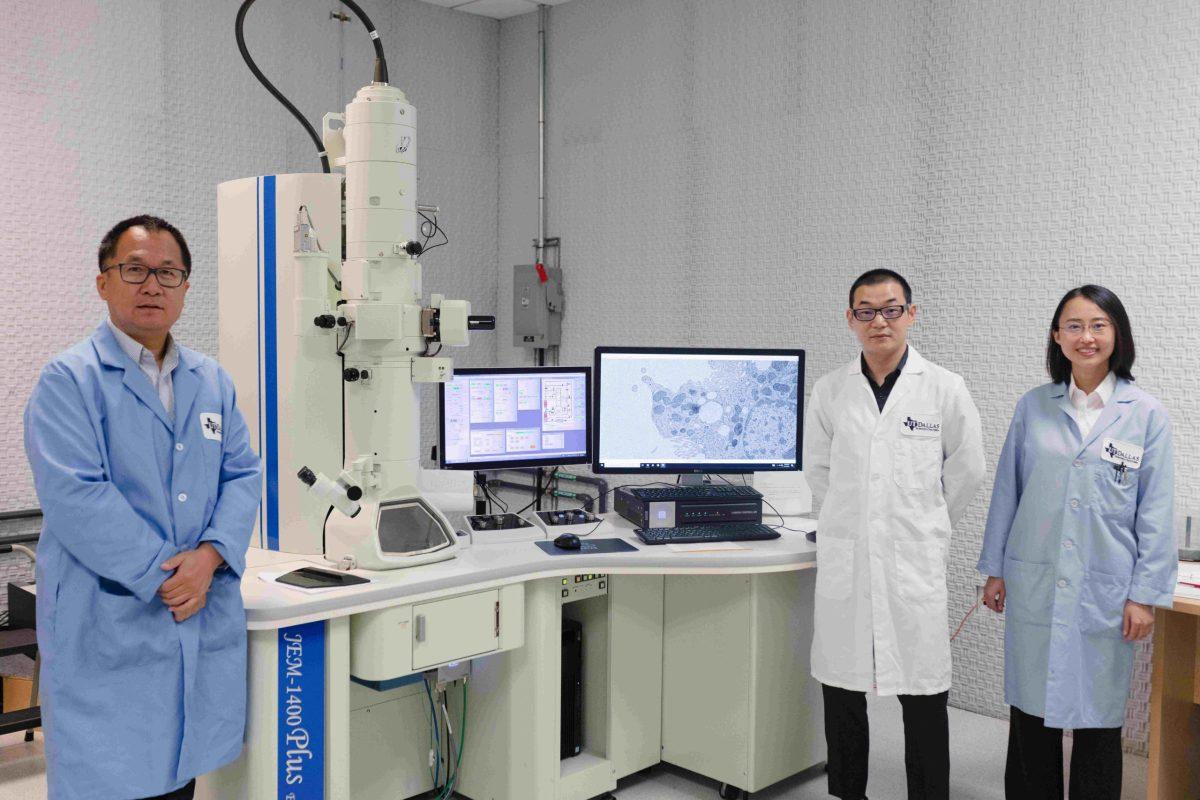UTD biomedical researchers have discovered a new way that kidney cells can self-renew, opening doors to potential early detection of kidney disease.
The team — led by biochemistry professor Jie Zheng, research associate professor Mengxiao Yu and research scientist Yingyu Huang — was inspired by their colleague’s research in 2017 and began researching the relationship between the size of nanoparticles in kidneys and renal clearance, or the rate at which kidneys remove substances from blood plasma and excrete them through urine.
“Kidney cells are not actively dividing like liver cells… they cannot regenerate themselves so easily,” Zheng said. “But what we found out [was] that kidney cells use nanoparticles as probes. We found [that] a kidney cell can self-renew its intracellular contents, so they use this intrinsic mechanism to push the old organelle out and then regenerate new organelles. That explains why our kidney can last so long even if it [a kidney cell] is not actually dividing. It’s the new mechanism that helps us understand how the kidney cells keep themselves healthy.”
Funded by the National Institute of Diabetes and Digestive and Kidney Diseases, or NIDDK, and internal UTD funds, the team was able to observe gold nanoparticles through the university’s electron microscope and discover a previously unknown mechanism by which kidney cells remove intracellular nanoparticles and organelles, ultimately maintaining the health status of kidney cells.
“Before our discovery, people often thought kidney cells removed the nanoparticles through exocytosis,” Yu said. “Exocytosis is to form some vesicles inside of the cells and the vesicles contain the nanoparticles and the vesicles move towards the membrane of the cells… to release the intracellular particles to all the cells. What we discovered is that there is no vesicle formed inside of the cell. The broad impact of our research [is that] — because it’s a new phenomenon we discovered — I think in [the] future we will explore how this tubular organelle actuation process changes with the disease progression.”
According to Huang, the path to the discovery was not straightforward, as he faced multiple challenges including the shift from being a chemist to being a biomedical researcher and distinguishing the team’s research from phenomena that had already been reported. However, he and his team were able to collaborate with UT Southwestern researchers and work among themselves to advance their research.
“I think because we are chemists, although we know how to synthesize nanoparticles, we don’t know… how to apply these particles to tackle challenges in the biomedical field,” Yu said. “We have collaborators in UT Southwestern like Dr. Jer-Tsong Hsieh in the urology department… [and] Dr. Qi Cai from the pathology department [who] taught us how to read tissue pathology. We discuss with them about the current questions, the most significant challenges in the biomedical field and also we learn from them how to do the biomedical research.”
Yu said that the team will continue to work on their research to unravel the mechanism at a molecular level and assist kidney healthcare. She also added that undergraduate researchers have helped them tremendously over the years, with their initial projects beginning in 2017.
“Our group has been an established group at UTD for 15 years,” Yu said. “We have been working with many undergraduate researchers … [and] some of them also became graduate students and got their Ph.D. from our lab. We really appreciate their efforts and we are also looking for more undergraduate students who share the same passion and also an open mindset and a hardworking attitude to work with us in [the] future.”





